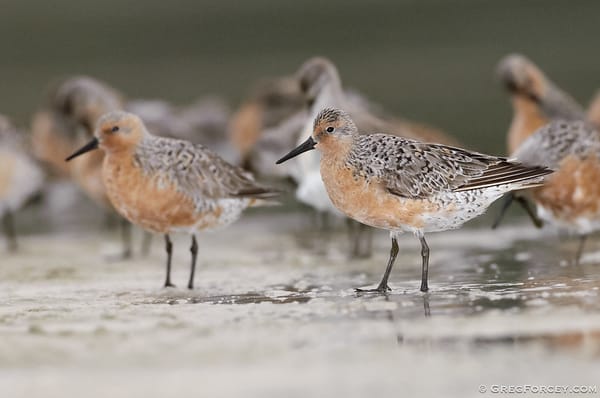How to Tweet about Science and Sustainability
My summary about a YouTube video on tweeting for science and sustainability

Much has been written about how to use and build an audience on Twitter; however, little information is focused on recommendations specifically for scientists. The instructional video below from Future Earth provides an excellent overview of how scientists can use Twitter for public outreach, build awareness about their research, and grow a following. Below are my notes from the video, provided with the hope they offer a concise summary for more efffient learning.
Twitter is important for science
Twitter can fit into a scientist's routine despite busy schedules
- 1.8 million articles are published each year in 28,000 journals
- 50% of articles are read only by their authors and journal editors
- Only 10% of articles are cited
Compared to scientific journals,
- Twitter democratizes and humanizes science
- Allows the general public to connect to science
- Provides a teaser to allow people to find out more
- Can't provide nuance like what is found in scientific papers or longer-form discussions
- Twitter is useful for connecting to video or blog content, and then people can go on to read the research paper from the blog if they choose
- Some suggest not linking directly to a research paper because they are not written for the general public (can get the research paper from the blog post); it depends on the target audience
Knowing the landscape
Basic Twitter terms
- Follower: someone who follows your tweets
- Direct message: a private message sent directly to someone
- Hashtag: categories for your tweets
- Retweet: a repost of someone else's tweet to your own Twitter feed
Types of Twitter Users
- Followback member: similar followers and following
- The newbie: very little activity
- The robot: large following and using hashtags; they don't follow others and don't engage much
- The watcher: follow a reasonable number of people but have few followers; don't tweet much
- Spam bot: waste space with automated tweets
- Celebrity: a large number of followers; many scientists (e.g., Neil deGrasse Tyson)
- The Roker - rotating accounts; people share the curation of them (e.g., @realscientists)
How to find conversations
- Use hashtags to follow topics of interest
- Create lists of people with common interests
Build and grow your Twitter following (sustainably)
How to write a Twitter Bio
- Google indexes this, so important to use keywords
- After writing, remove unnecessary filler words
- Extract the keywords from a written bio and abbreviate
- Remove pronouns
- Then spice up and make it fun to read
- @ mention relevant organizations
- Change keywords to hashtags where relevant
- Add "views own" at the end of the bio so you are not representing the organization you work for
- Can put | in between bio sections to divide up sections
Profile picture
- Use the same profile picture across social media so you have consistent branding and are recognizable
Background banner
- Used to make the profile look exciting and pretty
- Example background banners
- Pictures from fieldwork
- Research you've done
- Events that you have done
Anatomy of a tweet
- Put a hyperlink at the end of the tweet to direct an action
- Understand what you are tweeting for
- Instigate debate: use incendiary words like "bombshell."
- Tell people the news: less engagement is likely
- Incite friendly conversation: ask a question to get more engagement
- To make tweets more accessible, try explaining complex concepts using 1000 of the most common words in the English language: splasho.com/upgoer5
Hashtags
Use tags that people consistently use
Popular science hashtags
Biodiversity, ecological, and environmental themes
Help
Environmental Policy
- ClimateChange
- Climate
- COP21 (or another conference hashtag)
- Action2015, Action2023
Online communities
- PhDchat
- STEM
- Icanhazpdf (can be a violation of personal publishing agreements)
Help with academic writing
- Acwri (academic writing)
- Acwrimo (academic writing month)
- GetYourManuscriptOut
Science Communication
- CitizenScience
- CrowdFunding (not strictly about science)
- SciComm
Using hashtags
DOs
- Keep them short (1-2 hashtags/tweet)
- Use numbers for dates (e.g., survivephd15)
- Use a hashtag with a date for an event
- Group multiple words together (e.g., ClimateChange)
- Use capital letters to differentiate between words (FieldworkFail)
DONTs
- Use spaces
- Use special characters
- Use the @ symbol at the beginning of a tweet unless you are tweeting at that user
How many hashtags should I use?
- <3 is ideal,
- >2 The engagement drops
Twitter Lists
- Categorize people that you follow
- Help you listen to specific groups of people with the same interests
Hyperlink
- After putting a link in a tweet, check the link to make sure it works after tweeting
- Link shorteners allow you to customize the link and make it more memorable (e.g., bit.ly)
Images
- Helps with tweet visibility and engagement
- Use a photo if you are not including a link
- Photos do take some characters
- Text photos can also be used to add extra text to messages
- Canva is a great way to make images for social media
Emojis
- Good way to communicate; a way to express feelings with your tweets
How to grow your following
- Proofread your tweets (looks professional)
- Retweet and share from trusted sources
- Tweet regularly (conferences are an excellent place to start); several tweets a day is not too much
- Schedule posts for different timezones; schedule tweets for a bunch of things you read that morning
- Thank people who get in touch
- Ignore online bullies (trolls); some trolls are paid; not worth the effort; common with climate change topics
- Know your audience and how you want to engage with them
- Use positive words
- Organize your followers in lists; you could use a list as a source of resources for future reference
- Don't make every tweet about you
- Don't tweet angry or drunk
- Learn from others; find people who tweet well and learn from them; generate interest and interact with people
Twitter management and analytic tools
- Tweetdeck, Hootsuite, Buffer: monitor and schedule posts
- Twitter analytics: see follower growth; determine best-performing tweets
- Hashtracking: see how a hashtag is performing; less useful for personal tweeting
Doing it live
Why live tweet?
- Forces you to focus more and understand the content which you are listening to
- Form of note-taking
- Potential to reach beyond the room and generate exciting conversations
- Helps you get new followers
- Networking: catch up with people during the coffee break and discuss your Twitter interactions
- Often thanked for live tweeting a conference by other scientists and members of the general public
How to live tweet
- Determine conference hashtag
- Monitor conference hashtags (using Tweetdeck)
- Be prepared: find the Twitter handles of presenters; check for sessions that you want to go to and check to see if presenters are on Twitter
- Add value: add your perspective as well as that of the presenter (adding your own is hard)
- Retweet others: support other tweeters that you agree with; get different messages out
- If you made a mistake, you can delete the tweet
Live tweeting controversy
- Some conferences don't want live tweeting (check before proceeding)
- Some presenters are showing unpublished data and might not want the results shown beyond the conference
- Even though anyone can attend the conference, there could be data sensitivity issues
- Advice:
- Assume everyone is going to tweet your presentation
- Say at the beginning of your presentation if you have sensitive results
- Indicate specifically which of your slides you do not want to be tweeted. Put a symbol up with a "no tweet" symbol
- Be polite
Can tweets tell a story?
- Each tweet is one idea or a snapshot
- Storify provides a means to help your audience make sense of multiple tweets
- Stories are good for
- Key takeaways from a presentation
- Breaking news
- Main ideas from Twitter chats
- Storify Tips
DOs
- Break up tweets with your own narrative
- Include multiple perspectives
- Give minimal background but enough for readers to understand
- Use strong visuals
DON'Ts
- Get bogged down with too much backstory
- Just use tweets. Instead, pull in videos, slides, Facebook posts, etc. to make your content more engaging
- Leave it too late; you need to create a Storify within seven days of the tweets occurring
Summary
- Twitter can augment an existing scientist's work routine
- Know what kind of user you want to be
- Know your audience to grow a following
- Get started by live-tweeting at your next conference, event, or workshop
- Throw yourself in the "deep end" and learn as you go
Questions and Answers
Twitter vs. other social networks
- LinkedIn is more formal but doesn't have the interactive capability that Twitter does
- Facebook is a personal platform; the algorithm makes it hard to get your posts out (pay-to-play)
- Google Plus: Hasn't taken off; dead as of 2020
- Twitter is the best for self-promotion for scientists
Tweeting figures from closed-access journals
- Depends on the journal and what the researcher signed with the journal
- Copyright is a gray area with social media
- No definitive answer on what to do
Use your name or create a topical account?
- Depends on wants
- People prefer to engage with other people as opposed to a faceless entity; lean toward using your own personal profile
- Creates a human connection that we need in science for people to engage with the topic
- Let people see the kind of person that you are
- Bring yourself and your perspective to the table





